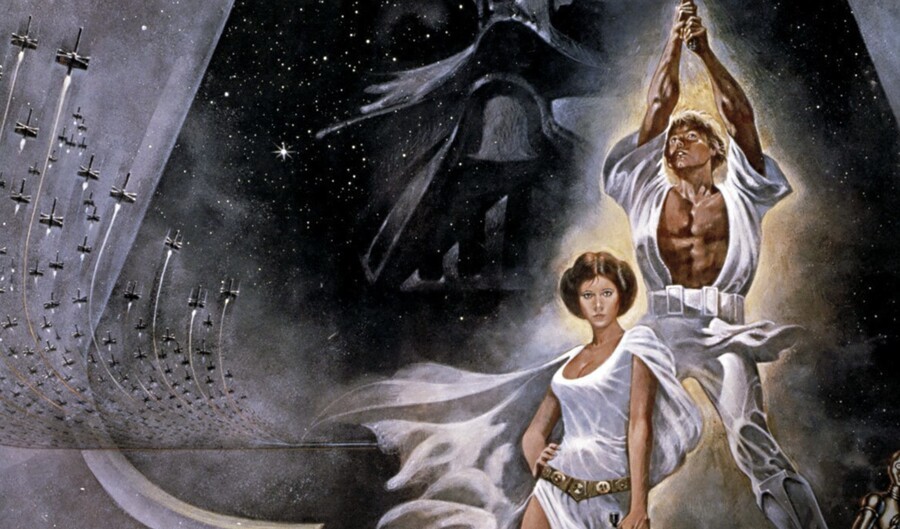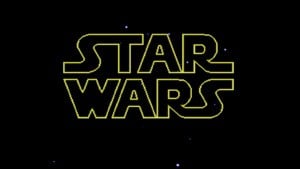
When people talk about the history of Star Wars games, Star Wars (1991) for the Nintendo Entertainment System is usually only referred to as a footnote on the way to bigger and more impressive depictions of the classic film.
On the one hand, that's fair, given the sidescrolling action game admittedly isn't the most accurate representation of A New Hope's events — Luke spends most of his time blasting at anything that moves — but on the other, it overlooks the incredible significance of the release. You see, the JVC-published NES sidescroller was technically the first ever Lucasfilm Games-developed Star Wars title, with the company having previously licensed out the computer and console rights to various other developers in the past. It was also the first Nintendo-related Star Wars game released in the West, with Namco's Famicom-based platformer never making it out of Japan.
Lucasfilm Games didn't work on this project alone, however, with an Australian developer named Beam Software helping the company to make its first Star Wars video game production. We recently chatted to one of Beam's former designers, Ian Malcolm, who was able to shed a bit more light on Star Wars development and what it was like collaborating with Lucasfilm Games at the time.
Malcolm joined the Melbourne studio Beam in the late 80s after leaving art school and got a job at the company initially as a storyboard artist, before moving into QA and level design. He describes the company at the time as a rabbit warren of partitions and offices filled with developers working away on the latest licenses that had come through Beam's doors: titles like Back to the Future, The Punisher, and The Hunt for Red October. Then one day, the Japanese company JVC got in touch, asking for help on a Star Wars project that it was trying to put together with Lucasfilm Games.

"We did it in conjunction with [Lucasfilm Games]," says Malcolm, who was responsible for its level design. "It was one of those things where it felt like we were taking artistic license in some areas in order to make it a game. I was joking about it with someone on Twitter the other day, and they were saying, ‘Ah, remember that scene in Star Wars where Luke runs through the cantina gunning down everything in his sight to find Han standing on a table."
Interestingly, as Malcolm tells us, he wasn't one of the original Beam employees that were assigned to be on the project but got the role one lunchtime after sitting down and accidentally criticizing the quality of an early build while testing it out in front of one of his managers.
Malcolm remembers, "So, I was sitting there one day playing away at this game and keeping up a running commentary with someone sitting next to me and I was bagging on it, hanging shit on it basically: ‘This could be good! This is blah! This is a bit crap! I don’t really like this! And this is a bit empty!’ I’m going on like this for ten minutes basically and then I feel this hand on my shoulder. I turn around and it’s the managing director of the company, and he goes, ‘Well, I guess you can help to fix it then.’ That was it. From that moment on, I was on the project."
Working on a Star Wars game was obviously a big deal for a Star Wars fan like Malcolm, though, at the time, George Lucas's space fantasy epic didn't necessarily command the same level of popularity or cultural relevance as it does today. The last "proper" Star Wars movie was released all the way back in 1983, and for all intents and purposes, the Skywalker Saga was over, with the occasional live-action/animated spin-off or home release being all that fans could hope for.
As Malcolm recalls, "I remember talking to friends about it outside of the industry and saying, ‘Oh, I’m working on this Star Wars game’ and their attitude was kind of like, ‘Oh yeah, Star Wars, that was a good film, I remember that.’ It was pre-Special Editions. Pre-prequels. And at that point, it kind of felt like there were three Star Wars films and that’s it. It’s over. I remember being a Star Wars fan and that was what you had: you had the three movies and the Holiday Special basically. Maybe the Ewok movies. But we still felt that it was a really prestigious license to have."
Malcolm says the development was surprisingly smooth and enjoyable, with one of the highlights being the chance to work alongside a small yet talented group of developers who had travelled to Melbourne from the Lucasfilm Games offices in California. This included the artist Jon Knoles, the designer AJ Redmer, and the development director Kelly Flock. It was Flock, in particular, that Malcolm hit it off with, with the two staying up late into the night at the Melbourne offices to discuss the game's design and tweak the levels to try and make them as satisfying as possible.
"Kelly Flock was kind of meant to be keeping an eye on where the money was being spent and all the rest of it back then," he tells us. "But he turned out to be really useful. He was so hands-on. Like I’d literally do a bunch of modifications to the level and then rather than burn a ROM, we’d have a linker that would download to a special cart, and so I’d dump that down.
"He’d sit there for five or six hours a night with me and he’d be playing stuff and we’d go back and forth like, ‘Maybe, we should shift that to there, what if we have this guy spawn there? What if he shoots three bullets instead of two?’ It was weird because this very senior Lucasfilm person came out and they were almost like my personal QA person just sitting there giving endless feedback. But it was very friendly and worked on a really good level."
The resulting game wasn't necessarily a classic by any means when it was eventually released in 1991, but it is still fondly remembered today by those whose experiences of the game are wrapped up in the joy of discovering Star Wars for the first time. A sequel Star Wars: Empire Strikes Back was released later that same year, again for the NES, but Beam wasn't involved with this follow-up. Instead, the Utah-based studio Sculptured Software was contracted to co-develop the game with Lucasfilm. This is the developer that would later also go on to co-develop Super Star Wars for the SNES.
From what Malcolm tells us, it seems like Lucasfilm's split from Beam wasn't a dramatic event, but an amicable parting of ways. He even tells us that the Lucasfilm developers actually gave those at Beam a parting present, in the form of some incredible Amiga games.
"I remember talking to Kelly Flock just as they were leaving to go back to the States," Malcolm remembers, "And saying, ‘Is there any way I could get the Amiga version of Monkey Island 2?’ I essentially wanted to get it before my friends. And he said, ‘It’s not actually finished yet, is there anything else you want? Have you got the original?’ And to be honest, I’d played the original, but I played a pirate version. Well, not really, a pirate version, but a bunch of us were really into that game and we each put in five or ten bucks and we bought one copy of Monkey Island and we’re here in a building of talented people and all of a sudden we all have a copy of Monkey Island on our PCs.
"I offered him money and he said, ‘Don’t be an idiot' and he left. Then maybe four months later, a package arrives at Beam and I get a call to come to the front desk. The box was much bigger than I expected and inside was every single Amiga game that Lucasfilm had done, except for Monkey Island 2. It had a note in the bottom from Kelly like, ‘Would you believe it’s still not finished?’"

